Benefits of early initiation of treatment in triage area
- Introduction...
- 1. Background Cont...
- 2. Problems...
- 3. Run Charts on b...
- 4. Aim Statement...
- 5. Team Members...
- 6. Process flow...
- 7. Fish Bone Analy...
- 8. Driver Diagram...
- 9. Change Idea(s) ...
- 10. Measurements...
- 11. PDSA –I assi...
- 12. PDSA-I Triage ...
- 13. PDSA-II Separa...
- 14. Check List...
- 15. PDSA-III...
- 16. Run Chart in M...
- 17. Run Chart in E...
- 18. Run Chart in N...
- 19. Comparative Ru...
- 20. Our observatio...
 |
 |
Introduction
PROF. DR. ASIM KUMAR MALLICK
--
In-charge Neonatal Unit,
NRS Medical College and HospitalKolkata,
West Bengal, India
1. Background Context & Problem Statement
Initiation of emergency treatment of sick new born within 30 minutes will reduces mortality and provide timely treatment. Early treatment will reduce complications (like organ damage) thus reduces hospital stay of neonate. It also reduces morbidity and long term sequale in neonate. It reduces the financial burden of the family and as a whole cost of therapy.
In a prospective cohort study of 91 infants and children presenting to community hospitals with septic shock (defined by hypotension or delayed capillary refill), each hour delay in initiation of appropriate resuscitation or persistence of hemodynamic abnormalities was associated with a clinically significant increased risk of death (odds ratio [OR] 1.5 and 2.3, respectively)**
2. Problems
► Delay in receiving the sick neonate in triage by Sisters.
► No Dedicated person posted in triage.
► Delay in processing of admission ticket.
► No Separate Emergency tray in triage hence delay.
3. Run Charts on base line data
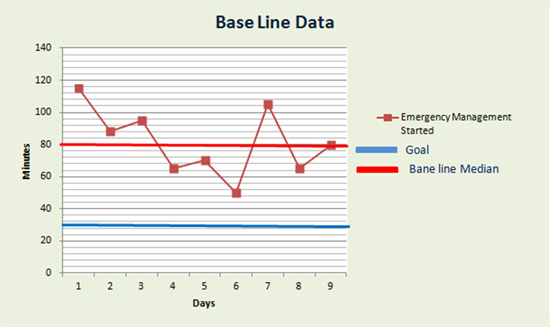
Senior Residents (who is assigned) measure the time by using stop clock and record.
4. Aim Statement
To initiate emergency management of all Sick Newborn admitted in our SNCU before 30 minutes (from two hours now) within 8 weeks from current of 20% to 80 % (within 30/04/2017)
5. Team Members
► Dr. Asim Kumar Mallick (Leader )
► Dr. Biswajit Mondal (Analyser)
► Dr. Gopal Pandey (Time Keeper)
► Dr. Mahammad Kalam (Communicator)
► Bina Acharya(Sister In-charge)
► Archana Ghosh(Staff Nurse)
► Sunipa Pramanik(Staff Nurse)
► Samaresh Kar (DEO)
6. Process flow

** Intervention Point
7. Fish Bone Analysis
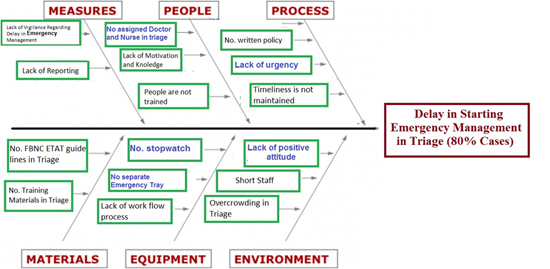
8. Driver Diagram

9. Change Idea(s) & PDSAs
1) Posting or assigning responsibility in each shift of
Doctors and Nurses in SNCU triage.
2) Immediate receiving of sick neonate at triage by the
nurses.
3) Separate emergency tray in triage.
4) Use of Stopwatch for measuring time.
5) Use of Sticker
10. Measurements
Outcome: Proportion of babies receiving emergency management within 30 minutes
Process:
1) Percentage of receiving baby immediately by nurses
2) Percentage of time of Posting of dedicated Sisters
and Doctors in triage.
3) Percentage of Doctors and nurses following the
emergency protocol.
Balancing Measures: Over crowding at triage area.
11. PDSA –I assigning responsibility in each shift of Doctors and Nurses

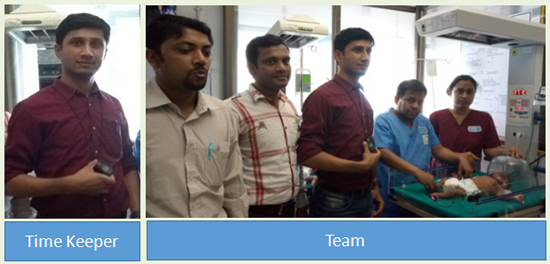
12. PDSA-I Triage Sticker

13. PDSA-II Separate emergency tray in triage
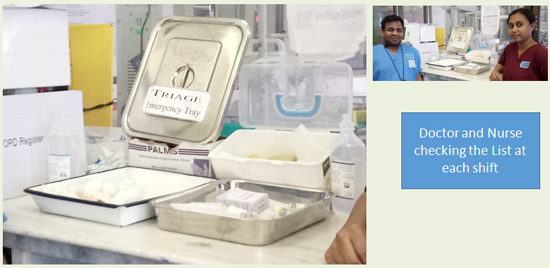
14. Check List
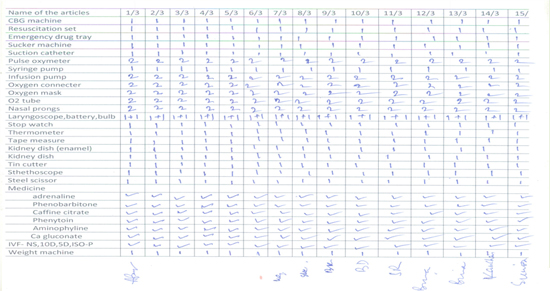
15. PDSA-III
Training of Doctors and Nurses for protocol treatment plan for Sick New Born.
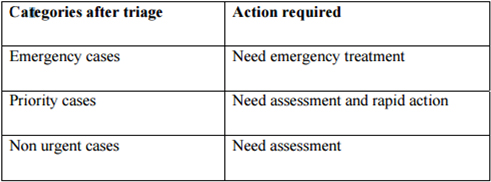
Emergency cases
Hypothermia (temp < 360C)
♦ Apnea or gasping respiration
♦ Severe respiratory distress
(rate>70, severe retractions, grunt)
♦ Central cyanosis
♦ Shock (cold periphery, CFT>3 secs, weak & fast pulse)
♦ Coma, convulsions or encephalopathy
16. Run Chart in Morning Shift
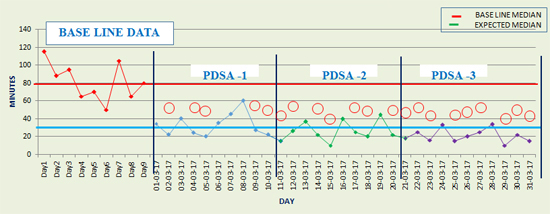
17. Run Chart in Evening Shift

18. Run Chart in Night Shift

19. Comparative Run Chart (Morning, Evening and Night)
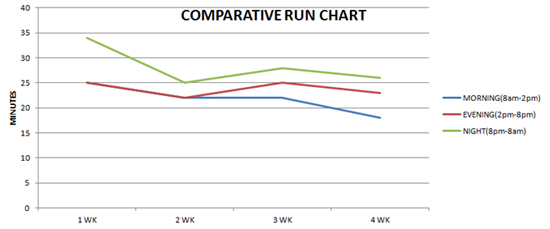
20. Our observations….
Looking at benefits of Triaging in morning shift and sharing the data with other shift nurses/doctors despite heavy rush in evening
On duty Doctors and Nurses of Evening and night shift are inspired by seeing the morning shift staff success.
Implement these change ideas to other shifts (Evening & Night) soon by sharing the success story among other health professionals and leadership of Hospital.
